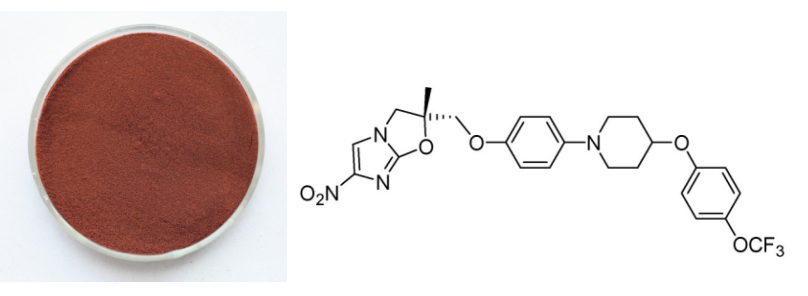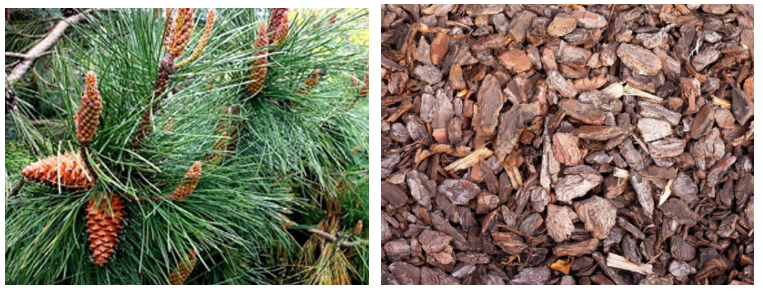China Manufacturer for Pine bark Extract in Bhutan
China Manufacturer for Pine bark Extract in Bhutan Detail:
[Latin Name] Pinus pinaster.
[Specification] OPC ≥ 95%
[Appearance] Red brown fine powder
Plant Part Used: Bark
[Particle size] 80Mesh
[Loss on drying] ≤5.0%
[Heavy Metal] ≤10PPM
[Storage] Store in cool & dry area, keep away from the direct light and heat.
[Shelf life] 24 Months
[Package] Packed in paper-drums and two plastic-bags inside.
[Net weight] 25kgs/drum
[What is Pine bark?]
Pine bark, botanical name Pinus pinaster, is a maritime pine native to southwest France that also grows in countries along the western Mediterranean. Pine bark contains a number of beneficial compounds that are extracted from the bark in a way that doesn’t destroy or damage the tree.
[How does it work?]
What gives pine bark extract its notoriety as a powerful ingredient and super antioxidant is that it’s loaded with oligomeric proanthocyanidin compounds, OPCs for short. The same ingredient can be found in grape seeds, the skin of peanuts and witch hazel bark. But what makes this miracle ingredient so amazing?
While OPCs found in this extract are mostly known for their antioxidant-producing benefits, these amazing compounds exude antibacterial, antiviral, anticarcinogenic, anti-aging, anti-inflammatory and anti-allergic properties. Pine bark extract can help reduce muscle soreness and may help improve conditions relating to poor circulation, high blood pressure, osteoarthritis, diabetes, ADHD, female reproductive issues, skin, erectile dysfunction, eye disease and sports stamina.
Seems like it must be pretty amazing, but let’s look closer. The list goes on a bit further, as the OPCs in this extract may “inhibit lipid peroxidation, platelet aggregation, capillary permeability and fragility, and to affect enzyme systems,” which basically means it may be a natural treatment for many serious health conditions, such as stroke and heart disease.
[Function]
- Lowers Glucose Levels, Improving Diabetic Symptoms
- Helps Prevent Hearing Loss and Balance
- Staves Off Infections
- Protects the Skin from Ultraviolet Exposure
- Decreases Erectile Dysfunction
- Reduces Inflammation
- Helps Increase Athletic Performance
Product detail pictures:

Related Product Guide:
Our crew through skilled training. Skilled skilled knowledge, strong sense of company, to meet the company wants of customers for China Manufacturer for Pine bark Extract in Bhutan , The product will supply to all over the world, such as: Libya, Colombia, Colombia, Our business activities and processes are engineered to make sure our customers have access to widest range of products with the shortest supply time lines. This achievement is made possible by our highly skilled and experienced team. We look for people who want to grow with us around the globe and stand out from the crowd. We have people who embrace tomorrow, have vision, love stretching their minds and going far beyond what they thought was achievable.
bestofdealshop.com/uzd2
SUBSCRIBE: https://bit.ly/1fNLSVx
PRINTABLE recipe: https://www.heathernicholds.com/recipes/creamy-sunflower-hemp-milk-recipe
Ingredients:
- 500 mL water
- 3 Tbsp sunflower seeds
- 2 Tbsp hemp seeds
- 1-2 dates OR 10 drops stevia (or vanilla stevia) OR 1-2 Tbsp unrefined sugar AND/OR 1/4 tsp vanilla extract
$100 Off + Free Shipping on Blendtec: https://brinx.it/wTr
Join the veganook recipe club
- this recipe + loads more in a fully searchable database
- nutritional info
- adjust portions
- create your own meal plans + shopping lists
veganook.com/recipe-club
Get healthier by eating better. Free 7-day program:
https://bit.ly/declutter-checklist
WORK with me: https://bit.ly/1P2xvMM
I offer meal plans, cleanse programs, cooking classes, online consultations, and personalized nutrition programs.
Find me on social media:
Facebook: https://www.facebook.com/heathernicholds
Twitter: https://www.twitter.com/heathernicholds
Instagram: https://instagram.com/heathernicholds
Music by Shaun David @ thirtysecondsongs.com
We are a small company that has just started, but we get the company leader's attention and gave us a lot of help. Hope we can make progress together!







